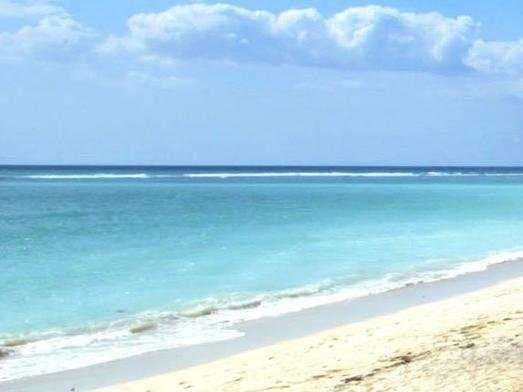
Scientists said Sunday they had found traces of a micro-continent hidden underneath the Indian Ocean island of Mauritius.
The slab, dubbed Mauritia, was probably formed around 61-83 million years ago after Madagascar split from India, but eventually broke up and became smothered by thick lava deposits, they said.
In a study published in the journal Nature Geoscience, scientists analyzed beach sand on Mauritius that contained ancient zircons between 660 million and about two billion years old.
The minute chips of mineral were a remarkable find, as they were buried in sand formed only recently in geological terms -- from nine-million-year-old volcanic rock.
“The zircon points to the existence of fragments of an ancient micro-continent beneath the island (Mauritius), pieces of which were brought to the surface by recent volcanic activity,” said a Nature statement.
The Indian Ocean floor may be littered with hidden land fragments that broke off as the once super-continent Pangea split up and formed the continents we know today, the paper suggests.
Pangea began to rift about 200 million years ago, yielding Gondwana in the south and Laurasia in the north.
Gondwana in turn split into Madagascar, Australia, Antarctica and India between 80 and 130 million years ago.
The new study suggests that Mauritia became detached when Madagascar and India split up.
The Seychelles, it adds, could be like Mauritia -- another continental fragment that, however, is visible. (AFP)
<관련 한글 기사>
바다 밑에서 미지의 고대대륙 발견!
인도양에 위치한 모리셔스 (Mauritius) 섬 아래 작은 고대 대륙의 흔적이 발견되었다고 과학자들이 전했다.
대륙은 아주 작은 크기이며, 인도에서 마다가스카르가 분리된 이후 6100만년에서 8300만년 전에 생성된 것으로 추정된다. 그러나 결국 갈라졌고 용암 퇴적물에 의해 가라앉았다.
네이처지오사이언스(Nature Geoscience) 저널에 실린 해당 연구는 모리셔스 해변 모래가 6억 6천만년에서 20억년 된 고대 지르콘 물질을 포함하고 있다고 전했다. 지르콘은 9백만년 된 화산석에 묻혀 있었다.
"지르콘은 이 대륙의 생성 시점을 알려주지요. 9백만년 전의 화산활동에 의해 지표면으로 올라왔습니다."라고 연구팀이 네이처지에 밝혔다. 지르콘을 찾아낸 것은 학문적으로 굉장한 성과였다고 덧붙였다.
연구 본문에 따르면 인도양 바닥은 한때 엄청난 크기였던 팡게아(Pangea) 대륙이 분리되며 생성되었다. 팡게아는 2억년 전 균열을 일으켜 윗부분은 라우라시아(Laurasia)로, 아랫부분은 곤드와나(Gondwana)로 나뉘었다. 곤드와나는 8천만년에서 1억3천만년 전에 마다가스카르, 오스트레일리아, 남극 그리고 인도대륙으로 분리된 것으로 알려져있다.
연구는 모리티아 대륙이 마다가스카르와 인도대륙이 쪼개질 때 떨어져나온 것으로 보고 있다.
세이셸제도(The Seychelles)가 모리티아처럼 대륙에서 떨어져나왔으나 현재 해수면 위에 위치해 모습을 드러내고 있는 경우라고 연구진이 설명했다. (코리아헤럴드)





![[Graphic News] Number of coffee franchises in S. Korea rises 13%](http://res.heraldm.com/phpwas/restmb_idxmake.php?idx=644&simg=/content/image/2024/05/02/20240502050817_0.gif&u=)


![[Robert J. Fouser] AI changes rationale for learning languages](http://res.heraldm.com/phpwas/restmb_idxmake.php?idx=644&simg=/content/image/2024/05/02/20240502050811_0.jpg&u=)









![[Eye Interview] 'If you live to 100, you might as well be happy,' says 88-year-old bestselling essayist](http://res.heraldm.com/phpwas/restmb_idxmake.php?idx=652&simg=/content/image/2024/05/03/20240503050674_0.jpg&u=)
